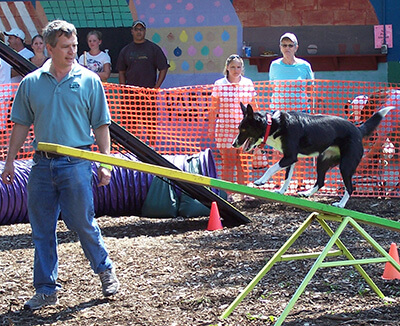
Coeur d’Alene Half Marathon
Scott Imlay has a need for speed. As a competitive triathlete, he’s always trying to better his time from the previous race. And as Tecplot’s chief technology officer (CTO), he was the visionary behind SZL, the company’s proprietary technology that allows Tecplot 360 to render images nearly seven times faster than earlier versions of the software. This dramatic performance improvement is the result of faster data load & analysis times, less memory usage and smaller files sizes.
Faster Loading and Visualizing Results up to 1 Trillion Cells
“NASA’s CFD Vision 2030 Study inspired our large-data initiative to address the growing complexity of CFD simulations, which are primarily limited by computer performance,” Scott said. “SZL technology overcomes the computer performance limitations by reducing the amount of solution data loaded when visualizing and analyzing CFD results. Our technique involves breaking the grid into small pieces called subzones, reading in only the subzones needed, and performing the feature extraction on just those subzones.”
Scott explained the goal of SZL, which is short for SubZone Load-on-demand, was to make Tecplot 360 faster than competing data visualization software packages for CFD engineers using desktop computers. “I’m happy to report we not only met, but exceeded that goal. Tecplot 360 is lightning fast, allowing engineers to visualize results from CFD cases up to 1 trillion cells,” he said. “Furthermore, SZL will serve as a foundational technology upon which future product developments will be built.”
Try It with Your Own Data
Of course, the best way for CFD engineers to validate Tecplot’s claims about SZL’s speed is for them to try it themselves with their own data. “I’d love for new prospects or our customers who are not currently enjoying the benefits of SZL to try it with their own data. They can do this by requesting a free trial. Our technical support team can show them how to use our TecIO library to output data directly from their application to SZL files, meaning they’ll be up and running in no time.”
A Renaissance Man
When not championing the development of category-leading software technologies, Scott is a bit of a renaissance man.

Dog Agility
As mentioned earlier, Scott is a competitive triathlete, usually participating in two events per year. The married father of one adult daughter, Andrea, is also an amateur wine maker and dog agility trainer.
“I have a small vineyard on my property in Western Washington where my wife, Kelli, and I grow the grapes and make mostly Bordeaux-style dry red wines,” Scott said. “I also have three dogs that I train in agility. Two of my dogs, a 13-year-old border collie named Jade and an eight-year-old Australian Shepard named Guinness, have been trained to the elite level and have competed in national-level championships.” Scott’s other dog, Chester, is a three-year-old border collie mix that competes as a novice.
A Tecplot employee since 1985, Scott is still “fascinated” by the meaningful work being done by Tecplot customers, such as studying the fluid dynamics of spacecraft reentry into our atmosphere or developing chemical lasers for medical research purposes. “We get to work with some of the smartest scientists and engineers in the world on a daily basis,” he enthused. “That’s very motivating to me.”
Making the Impossible Possible
In his role as the company’s CTO, Scott is a member of Tecplot’s senior management team, which defines the strategic direction of the company. A Ph.D. in Aeronautical and Astronautical Engineering from the University of Washington, Scott also serves as the company’s Chief Technical Officer and runs a small research group that explores the technology required for new products, new markets, or new features in our existing software. He explains, “Our mission is to develop ‘leapfrog’ technology solutions to solve customer issues and beat the competition.”
Although Scott said it can be difficult to do project planning and resource allocation for a research project, the results often bear immediate fruit. “Our successful research projects have dramatically improved the capabilities of our software. This has made it possible for our customers to do things they couldn’t do before. We make the impossible possible,” he exclaimed.




